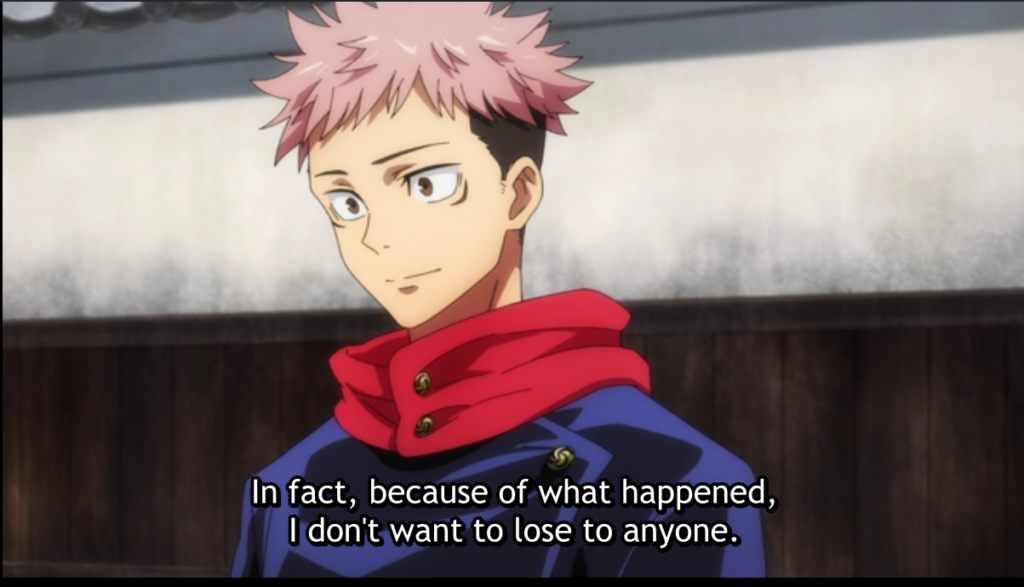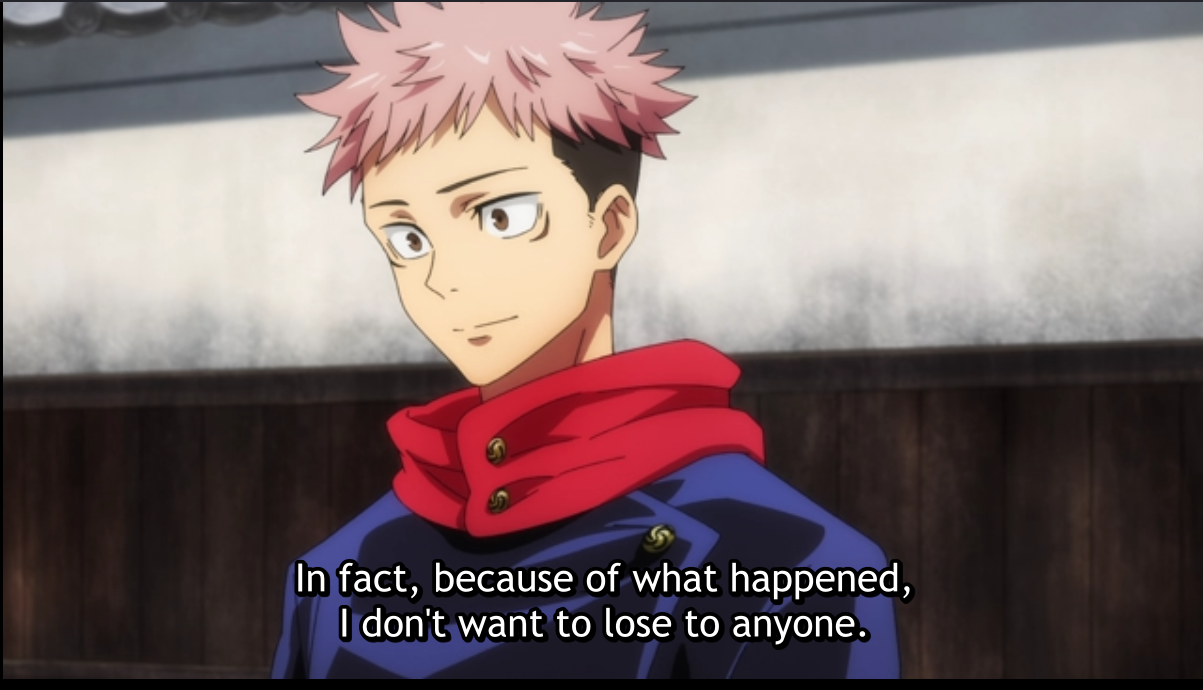Anime Review: Jujutsu Kaisen
Unknown to the vast majority of humans, they share the Earth with noroi, curses, supernatural monsters that spawn from the negative emotions of humanity. Some humans, however, can sense and use cursed energy to various degrees. Those that battle curses become jujutsu sorcerers, while those that use these powers for evil are called curse users. Presently in Japan, there are only two schools for jujutsu sorcerers, which masquerade as private religious high schools.

None of this is known to Yuji Itadori at the beginning of the story. As far as he is concerned, he is a perfectly normal high school boy living in Sendai with his grandfather. (Who passes away from illness in the first episode.) It’s pretty clear to the audience, however that something is up. Yuji’s parents are missing, and he refuses to learn more about them from his grandfather, and Yuji has superhuman strength and durability that would make him a top athlete if he were interested in that, as well as knowing Taido martial arts. But Yuji’s most interested in helping out his friends in the nearly moribund Occult Club.
Yuji had stumbled on a mysterious object wrapped in a protective ward, and gave it to the other members to investigate. He’s then confronted by a serious looking fellow named Megumi Fushiguro, a jujutsu sorcery trainee who informs Yuji that the object is a dangerous relic that attracts curses. Megumi and Yuji rush to the rescue, but the relic, a mummified finger, has already been unveiled, and a powerful curse is attacking Yuji’s friends. Megumi is soon on the ropes, and Yuji resorts to swallowing the finger, manifesting the King of Curses, Sukuna, within himself.
To everyone’s shock, including Sukuna, Yuji is able to control the cursed energy and prevent Sukuna from taking over his body. The lad is quickly recruited by the blindfolded teacher Satoru Gojo to attend the Tokyo Jujutsu High School as a first-year along with Megumi. They are soon joined by Nobara Kugisaki, a girl from the boonies, as the third member of the team. The three learn their new trade, fighting curses and the machinations of their superiors.
This anime series is based on a shounen battle manga by Gege Akutami which began appearing in Weekly Shounen Jump in 2018. As is often the case with these sorts of series, Yuji’s powerset is pretty bland. Hit, and hit harder. But the fact that he’s got the most evil being known to exist living inside of him makes for some suspense as he can’t rely on Sukuna helping him, and letting the monster out is generally a bad idea. Megumi can summon shikigami servants in the form of various supernatural folklore entities, and Nobara can create poppets to plunge nails into to inflict damage.
Cursed energy is channeled from negative emotions, so most of the jujutsu sorcerers seen are some variation of abrasive, depressed or ill-tempered. And some of them are downright weird, like Panda, who is a living panda doll. My personal favorite supporting character is Kento Nanami, a former salaryman who isn’t keen on being a monster hunter, but discovered late-stage capitalism is worse.
There’s a variety of curse monsters to deal with, the most pressing in this season being Mahito, a seemingly jolly fellow who leads a group of “Natural Disaster”-themed curses, and can reshape human bodies at will. Yuji becomes increasingly personally the enemy of Mahito, and this season does not resolve that issue. Most of the other subplots are also not resolved, but there’s a bit of closure.
The fight scenes range from okay to excellent, with some of them being quite inventive. There’s a crossover with the Kyoto school that allows everyone to show off their skills.
Content note: Bullying, especially in the arc that establishes Mahito as a threat. Body horror a-plenty, gory violence. Sexism and how the female characters have different coping methods for it is discussed. This is a series for late teens on up.
Overall: If you like shounen battle series, and are looking for something to watch between seasons of Demon Slayer, this is a good one of those.

